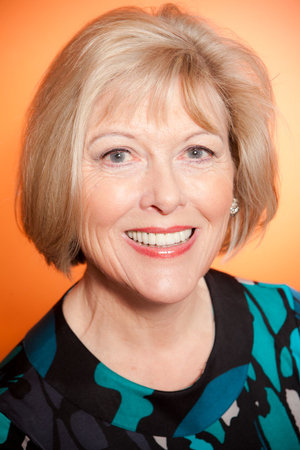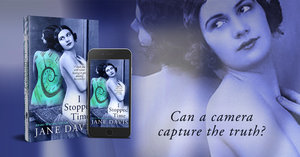Virtual Book Club has been socially distancing for a while but I’m delighted to be back with writer and broadcaster Christine Webber. We’ll be discussing her new novel, So Many Ways of Loving.
Christine Webber tried various careers in her younger days – she was a classical singer, a Principal Boy in pantomimes, an undistinguished actress as well as a piano and singing teacher. Fortunately, for her, when she was thirty, she managed to get a job in television as a continuity announcer, and shortly thereafter she became a news presenter at Anglia TV. Finally, she had found an occupation she liked that other people thought she was good at. This, she says, was a massive relief.
In her early forties, she married the love of her life, David Delvin. Soon afterwards, she decided it was time to leave news presenting to train as a psychotherapist and she also became a problem page columnist for various publications including TV Times, Best, BBC Parenting, The Scotsman and Woman. In addition, she regularly broadcast relationship advice on Trisha, The Good Sex Guide …Late and from the BBC’s Breakfast sofa.
In her fifties, she and her husband set up a practice in Harley Street, and they worked together there and collaborated on several books. They also wrote the sex/relationships content on www.netdoctor.co.uk and penned a joint column for the health section of The Spectator.
Over the decades, Christine was commissioned to write ten self-help books including Get the Happiness Habit, How to Mend a Broken Heart and Too Young to Get Old.
Now, in her seventies, her focus is on the issues of mid and later life. She makes video podcasts on positive ageing and writes a column for various regional papers on that theme. She is also a life coach specialising in health and ageing. But she has no plans for any more non-fiction books. Instead, for the past five years she has concentrated on writing novels for and about older people. Previous titles in this genre have been Who’d Have Thought It? and It’s Who We Are.
From the back cover
So Many Ways of Loving is a novel in which, at first glance, nothing much happens – there’s no espionage, no high-speed car chases, murders, or haunted houses. But in a sense, everything happens – loss, death, grief, serious illness, but also birth, unexpected romance, fresh adventures and numerous possibilities.
Three women in their 50s and 60s travel through the most momentous year of their lives, and as they do so, they are reminded of just how much we depend upon family, friends and pets.
Dr Max Pemberton – psychiatrist and Daily Mail columnist – who provided the cover quote says: ‘This is a poignant and insightful tale of widowhood and other challenges of later life which really resonated with my clinical experience.’
Q: Do you think that middle-aged and older women under under-represented in fiction? (I must say that I am now at an age when I read novels about someone who is described as middle-aged (or old) only to discover that they are younger than I am. As a reader do you find enough positive/accurate stories about aging?)
A: I think they are under-represented when you look at the age of the people who are buying and reading the most books. But the situation isn’t as dire as it was about five years ago. As a reader who was approaching 70 at that time, I was falling out of love with all those anguished heroines in their thirties and wanted to read more about the stages of life I was at. I think this is normal. I mean, when you’re a child, you want to read about other children, don’t you? There were of course older characters in novels but usually only on the sidelines and they tended to be caricatures, I felt. I wanted full-blooded protagonists who were responding to all the changes of mid to later life and surmounting them and living useful, positive lives. And that’s what led to me writing fiction after 30 years of penning self-help books for Hodder, Piatkus and Bloomsbury. By the way, other authors were obviously thinking the same way – Deborah Moggach being one. But a lot of indie writers were also focusing on later life stories – really good people like Anne Stormont, Maggie Christensen and Claire Baldry. So, it’s a growing trend. And I think older readers have welcomed it.

Q: Who is your own favourite female literary character and why?
A: I feel compelled to say Anna Karenina which is slightly absurd as I last read it aged 18! But she came into my mind as I read your question. I’m not sure why except that she had a profound impact on me that remains all these decades later. Of course, I adore Elizabeth Bennett, and when I was younger, I wanted to be like Jo Marsh in Little Women. Among contemporary writers, I think a youngish author, Jessie Burton, captures older women extremely well and I’ve really enjoyed her characters Marjorie in The Muse and Connie in The Confession.
Q: Man Booker prize-winner Richard Flanagan said that The Narrow Road to the Deep North was the book he couldn’t avoid writing. Have you ever felt that way about a book?
Yes, I think this is mine. Ten years ago, if I had been bereaved, I would almost certainly have written a self-help book about grief. But nowadays I feel readers can be helped through reading fiction about the life changes they themselves are experiencing. And fiction allows a writer to be far more flexible and expansive with language.
Q: Is it fair to say that this is the most personal novel you have written to date?
A: Without a doubt!
Q: How difficult or helpful was it to write the character of Jen who was in a similar situation to you?
A: I am not Jen, and she is not me. She is much younger and also she comes from an entirely different background. But we have widowhood in common and I have attributed to her partner many of the lovely characteristics of my own late husband. I feel, in some way, that I am paying tribute to him. Additionally, her bizarre thoughts and abrupt changes of mood have been pretty close to my own experience.
Q: Is your writing plot-driven or character-driven?
A: I never really used to think about this – though with both of my other books about older people my readers invariably told me how much they loved my characters and how they would like a sequel! Sometimes they would say, ‘I wish they could be my friends’, which I always take as a great compliment. But I suppose I’m very interested in how people tick otherwise I’d never have become an agony aunt or a psychotherapist or coach. But anyway, I showed this book, months ago before it was finished, to a brilliant agent, Juliet Mushens, who has huge stars on her books including Richard Osman and Jessie Burton. I know her because she was a very keen and talented junior assistant at Peters, Fraser and Dunlop in the days when they represented me for my self-help books. We have stayed in touch, though she has never wanted to be my agent, alas. However, she said she liked the novel but also told me that she could never represent me because she likes plot-driven books and that mine are always character-driven. And I realised then that she was right. In So Many Ways of Loving I actually think that quite a lot happens – really important stuff – but it has no real dramatic narrative. People are busy coping with their life-changing moments behind closed doors.
Q: One of the things that struck me about your three main female characters is how very different they were and how, in children or younger people these differences might have precluded friendship, but coming together as they did, at the time that they did, they were drawn to one another.
A: I totally agree. I think when we are younger we almost want clones of ourselves! My own experience of friendship in later life – and particularly since David died – is much more diverse and I relish that. Often there is a link because you’re both interested in a particular type of music, or you enjoy the same sort of books, but other than that fate may just have thrown you together at a time when you needed new friends and a surprising fondness springs up out of nowhere. Friendship as you get older is so, so crucial. This is partly because long-term friends fall by the wayside in ways you didn’t expect – they move across the world to be near grandchildren, they become ill or die, or maybe they age in a way you don’t want for yourself. Sometimes they become bitter, or racist, or very negative. So, I think we all need to make several new friends every year if we can. Some of my newest pals are special and close in a way I would not have anticipated. It’s a rich seam for writers!

Q: I have to say that my favourite thing in the book was the scene in which James, Monica’s (soon-to-be ex) husband, is in Lucy’s spare room and discovers the painting by a now famous artist whose identity is hinted up but remains nameless. How important was it to you, in writing the character of James, who has not been a good or faithful husband, to have the opportunity to redeem himself?
A: Oh, thank you. I love that scene too and I have no idea where it came from. I just found myself writing it. I didn’t set out to make the James character awful but with my therapist hat on, I have seen a lot of women like Monica putting up with quite bad treatment because it almost doesn’t occur to them that they could have a different sort of life. He definitely emerged rather nastier than I had planned. But then I found real common ground between him and one of the main female characters and he responded to her in a way that was compassionate and interesting and thoughtful. And I suppose that is what makes a rounded character because no one is all bad or indeed all good. Definitely, having been a therapist for twenty odd years has informed how I write about people.
Q: Did writing and producing a book under lockdown conditions throw up any particular challenges?
A: Not really. This book has taken a long time to write but I decided I could not rush it. It was actually a glimmer of an idea before David died, but I was not ready to write it then, or for a while thereafter. So, most unusually for me I set no target dates, and no daily word quota – I just wrote it gradually, and as it came to me. It was probably helpful for me that lots of other work stopped during the pandemic so I could give it plenty of attention.
Q: I adored the ending.
A: Thank you. Certainly, the very last line could only have been written in current circumstances!
To find out more about Christine:
Visit her website, find her on Facebook or follow her on Twitter.
To have future posts delivered directly to your in-box, visit the sidebar on the right and subscribe to my blog, or to find out about new releases, competitions and freebies, subscribe to my newsletter and I will send you a free copy of my novel, I Stopped Time, as a thank you.
While I have your attention, can I please draw your attention to my updated Privacy Policy. (You may have noticed, they’re all the rage.) I hope this will reassure you that I take your privacy seriously.
Remember, if you enjoyed this post please share it.
If you have subscribed to my blog but no longer wish to receive these posts, simply reply with the subject-line ‘UNSUBSCRIBE’ and I will delete you from my list.



